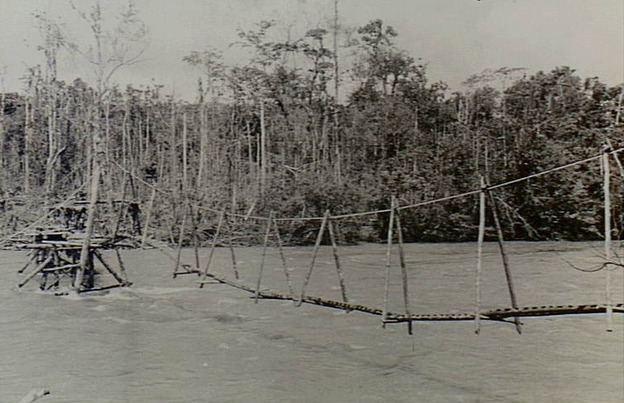Kumusi River on:
[Wikipedia]
[Google]
[Amazon]
 The Kumusi River (also known as the Kamusi River) is a river located in the
The Kumusi River (also known as the Kamusi River) is a river located in the

 Due to its relative proximity to the
Due to its relative proximity to the
 The Kumusi River (also known as the Kamusi River) is a river located in the
The Kumusi River (also known as the Kamusi River) is a river located in the Oro Province
Oro Province, formerly (and officially still) Northern Province, is a coastal province of Papua New Guinea. The provincial capital is Popondetta. The province covers 22,800 km2, and has 176,206 inhabitants (2011 census). The province shares la ...
of Papua New Guinea
Papua New Guinea (abbreviated PNG; , ; tpi, Papua Niugini; ho, Papua Niu Gini), officially the Independent State of Papua New Guinea ( tpi, Independen Stet bilong Papua Niugini; ho, Independen Stet bilong Papua Niu Gini), is a country i ...
. Known for its width and its strength, the Kumusi has had a significant impact on the history of the Oro Province. It was a significant factor in the Kokoda Track Campaign
The Kokoda Track campaign or Kokoda Trail campaign was part of the Pacific War of World War II. The campaign consisted of a series of battles fought between July and November 1942 in what was then the Australian Territory of Papua. It was primar ...
and also a contributing factor to the destruction caused by Cyclone Guba
Severe Tropical Cyclone Guba was the most recent tropical cyclone to form in the Port Moresby area of responsibility. The storm resulted in 149 fatalities and severe damage across southeastern Papua New Guinea in November 2007. The firstly-named c ...
.
History
World War II

 Due to its relative proximity to the
Due to its relative proximity to the Kokoda Track
The Kokoda Track or Trail is a single-file foot thoroughfare that runs overland – in a straight line – through the Owen Stanley Range in Papua New Guinea (PNG). The track was the location of the 1942 World War II battle between Japanes ...
, the Kumusi River was often a factor in the Kokoda Track Campaign
The Kokoda Track campaign or Kokoda Trail campaign was part of the Pacific War of World War II. The campaign consisted of a series of battles fought between July and November 1942 in what was then the Australian Territory of Papua. It was primar ...
of World War II
World War II or the Second World War, often abbreviated as WWII or WW2, was a world war that lasted from 1939 to 1945. It involved the vast majority of the world's countries—including all of the great powers—forming two opposin ...
. The fast flowing and wide river provided natural barrier from enemy, and gave the soldiers a distinct advantage. There were few bridges, the solid ones were often bombed to break a supply line. Soldiers often had to walk, or use rafts through the powerful current in order to get across Many fatalities were recorded as the current overwhelmed the soldiers. One of the most notable deaths was that of Japanese Major General Tomitaro Horii. After the Oivi-Gorari battle, the Japanese chaotically crossed the river at Wairopi. Although his horse already had drowned, Horii opted to try and cross on a raft. He soon fell into the water and drowned
Drowning is a type of suffocation induced by the submersion of the mouth and nose in a liquid. Most instances of fatal drowning occur alone or in situations where others present are either unaware of the victim's situation or unable to offer as ...
.
Cyclone Guba
On 14 and 15 November 2007,Cyclone Guba
Severe Tropical Cyclone Guba was the most recent tropical cyclone to form in the Port Moresby area of responsibility. The storm resulted in 149 fatalities and severe damage across southeastern Papua New Guinea in November 2007. The firstly-named c ...
hit the Oro Province. The Cyclone brought five days of solid rain
Rain is water droplets that have condensed from atmospheric water vapor and then fall under gravity. Rain is a major component of the water cycle and is responsible for depositing most of the fresh water on the Earth. It provides water f ...
, causing widespread flooding
A flood is an overflow of water ( or rarely other fluids) that submerges land that is usually dry. In the sense of "flowing water", the word may also be applied to the inflow of the tide. Floods are an area of study of the discipline hydrolog ...
; the Kumusi swelled to ten times its original width.
The flooding destroyed homes, gardens and in some cases, entire villages were washed away. The flooding completely destroyed the provinces vital infrastructure, over twenty-two bridges were washed away, cutting the link to Popondetta
Popondetta (sometimes spelled Popondota) is the capital of Oro (Northern) Province in Papua New Guinea. Popondetta is a city.
In 1951 the city became the focus of relief efforts after nearby Mount Lamington erupted and killed 4,000 people.
P ...
. Of the twenty-two, the Kumusi Bridge, a large steel structure was destroyed, with estimated rebuilding costs at K70 million. A replacement bridge funded by the Australian government opened in 2016.
http://www.looppng.com/content/pm-officially-open-kumusi-bridge
Notes
References
* * * Rivers of Papua New Guinea {{PapuaNewGuinea-river-stub